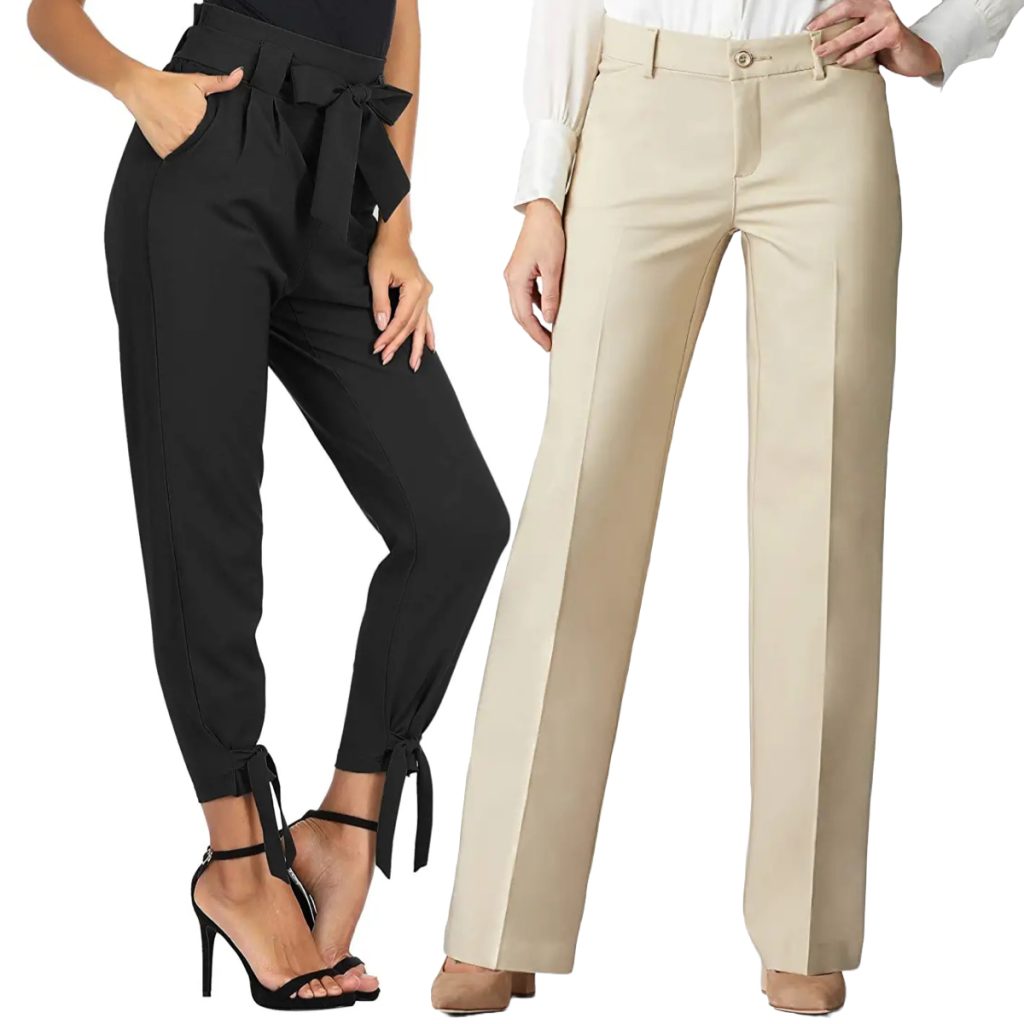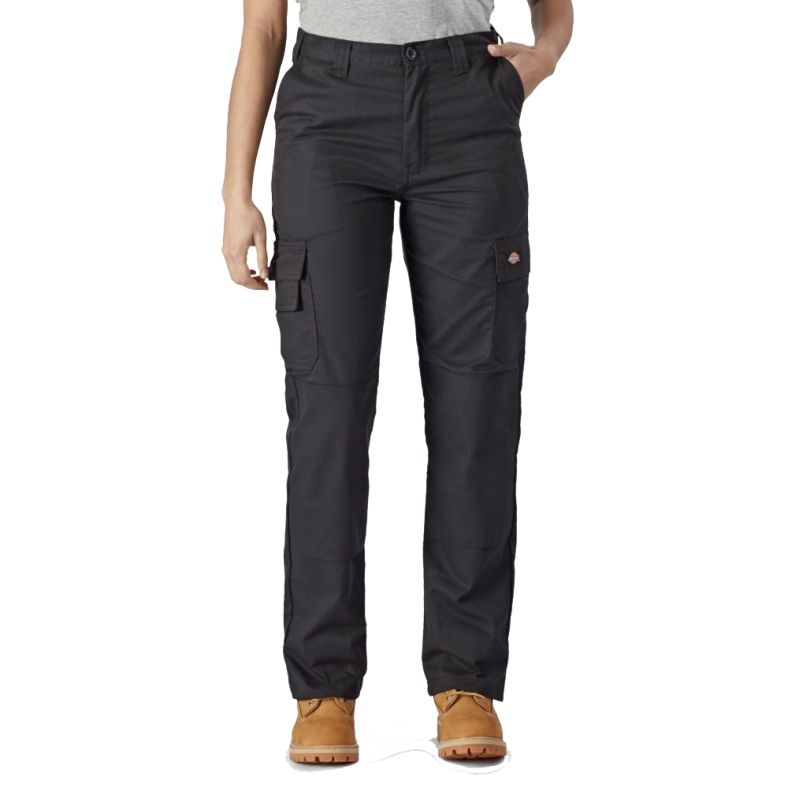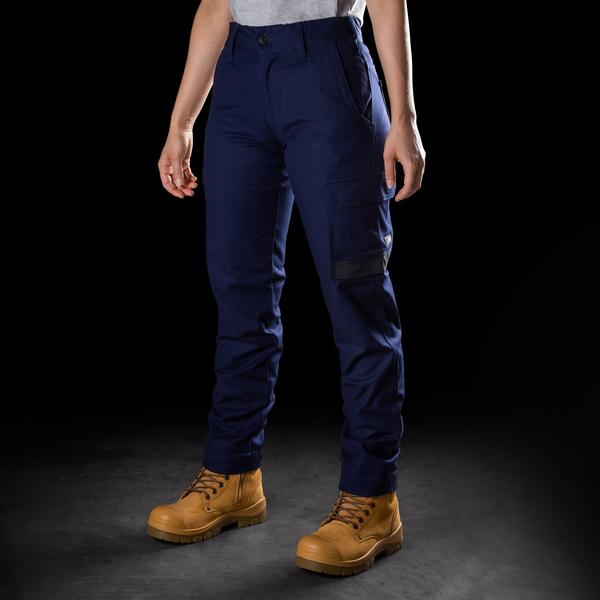I. The Components of Comfort and Utility
A. The Importance of Material
When selecting work pants, comfort and durability are paramount. The right material can make a significant difference in your day-to-day comfort and the longevity of the garment. Popular choices like cotton, denim, and canvas are favored for their breathability and resistance to wear. Cotton, for instance, offers a soft touch and flexibility, while canvas provides unparalleled toughness for more demanding jobs. Blends that include synthetic fibers like polyester or spandex can enhance the functionality by offering stretch and moisture-wicking properties, keeping you dry and mobile throughout your workday. It’s this blend of natural and synthetic fibers that often strikes the perfect balance between comfort and practical utility in modern work pants.
B. Fit and Ergonomics
The fit of pants is about more than just looking good. It’s a critical factor in mobility and, by extension, job performance. A pair of pants that is too tight may restrict movement and can lead to discomfort or even injury over time. Conversely, overly loose pants can catch on equipment or pose a tripping hazard. Modern work pants are designed with ergonomics in mind, offering features like gusseted crotches and articulated knees which provide enhanced freedom of movement. Waistbands that feature elastic or adjustable components allow for a snug, yet comfortable fit that accommodates a range of body types and work postures. These design elements ensure you can bend, stretch, and kneel without resistance from your clothing, helping you maintain efficiency and focus on your tasks.

II. Utilitarian Features for Various Professions
A. Pockets and Tool Accommodation
Work pants aren’t merely clothing; they are a tool in themselves for many professionals. Pockets are pivotal, especially for tradespeople who need easy access to tools and materials. Standard designs incorporate pockets of varying sizes and closures to store items securely. Some pants even feature specialized pockets designed for specific tools like hammers or pliers, or technology like smartphones. Reinforced stitching and material at pocket sites are standard, ensuring that these areas can withstand the repeated stress of inserting and removing items. For additional functionality, look for pants with loop attachments or integrated tool belts, which offer further flexibility to carry what you need within arm’s reach.
B. Safety Enhancements
Safety on the job is a critical consideration, and certain work environments require clothing that protects as much as it performs. Reflective elements sewn into pants improve visibility during nighttime work or in low-light conditions. Flame-resistant materials are crucial for those in welding or electrical work, providing an added layer of protection against sparks and heat. Brands specializing in workwear also incorporate reinforcements in high-wear areas like knees and seat to resist abrasion and tears, prolonging the life of the pants amidst rough surfaces and constant contact with work materials. When dealing with hazardous conditions, having work pants equipped with these safety features can be a significant factor in preventing accidents and injuries.
III. Balancing Style with Practicality
A. Merging Fashion with Function
While function is the driving force behind work pants design, style has increasingly become a consideration for consumers. Brands have responded by creating workwear that is both practical and fashionable, ensuring workers can transition from job sites to casual settings without changing outfits. Design elements such as tailored fits and contemporary color palettes allow individuals to express personal style while maintaining the rugged functionality of traditional work pants. This blend of aesthetics and practicality means that workwear no longer has to look utilitarian to perform as such, making it a versatile option for those who value appearance as well as performance.

B. Sustainability and Ethical Considerations
The evolution of consumer values toward sustainability and ethical manufacturing has spilled into the world of work pants. Environmentally conscious individuals seek garments made from organic or recycled materials, produced in fair-trade-certified facilities. Leading brands are acknowledging this shift by offering eco-friendly lines that minimize environmental impact without compromising on quality or functionality. Features such as biodegradable fabrics, non-toxic dyes, and energy-efficient production methods demonstrate a commitment to responsible stewardship that resonates with a growing segment of the workforce. By choosing work pants with a focus on sustainability, consumers can support ethical practices while still receiving the performance they require from their workwear.
V. A Personal Investment in Workwear
A. Making the Right Choice for Your Needs
Selecting the best pair of work pants is a personal decision that should balance one’s job requirements with individual comfort and style preferences. It’s essential to evaluate the specific needs of your industry—be it construction, automotive, maintenance, or any other trade. Consider the levels of physical activity, potential environmental hazards, and the necessity for tool accessibility when making your decision. Taking into account personal fit preferences, such as a high or low waist, slim or relaxed cut, can also impact how comfortable you feel throughout the workday. Remember that the right work pants are an investment in your professional performance.
B. The Impact on Daily Work Life
Quality work pants can have a profound impact on an individual’s daily work life. They not only provide protection from occupational hazards but also influence the wearer’s well-being and productivity. Comfortable work attire can enhance focus and morale, reducing the stress that comes with uncomfortable or ill-fitting garments. When workers are equipped with pants that cater to their practical needs and reflect their personal style, it can lead to higher job satisfaction and a greater sense of professionalism. These benefits underscore the importance of carefully choosing work pants, as they are more than simple attire—they are a fundamental component of an efficient, safe, and positive work environment.

VI. The Future of Work Pants in Industry Evolution
A. Anticipating Industry Changes and Adaptability
As industries evolve with technology and changing practices, work pants too must adapt to meet new demands. Designers and manufacturers constantly survey the landscape, anticipating shifts such as the increasing prevalence of automation, new safety regulations, or the rising importance of sustainable practices. Work pants of the future may incorporate advanced materials that are lighter yet stronger or offer improved connectivity with wearable technology. The industry’s adaptability ensures that as the nature of work changes. So will the features of workwear, providing professionals with gear that supports new methods and workflows while anticipating future needs.
B. Driving Innovation Through Feedback and Field Testing
The most effective improvements in work pants come from those who wear them daily. Manufacturers recognize the importance of worker feedback and engage in field testing to understand on-the-ground requirements better. This direct input can drive innovation in design. Leading to custom solutions like enhanced climate control for extreme weather conditions or smart pockets for evolving toolsets. Workers often identify areas for improvement that designers may not immediately see – a testament to the importance of collaboration between the wearers and makers of workwear. It’s this loop of feedback and innovation that continually refines the utility, safety, and comfort of work pants for all industries.
In summation, the ideal work pants blend comfort, durability, functionality. And style, ensuring that workers are well-equipped for their tasks with a garment that meets their professional and personal needs. Materials, fit, utility features, safety enhancements, style, and ethical considerations all play pivotal roles in determining the quality and suitability of work pants for various professions. As the workforce evolves, so too does workwear. Adapting to meet the demands of modern-day workers who expect more from their uniforms than ever before.
